Harris-Stowe State University
Introduction
Text-to-speech Audio
Images
Physics students at Stowe Teachers College in The Ville working on a class project, 1931.
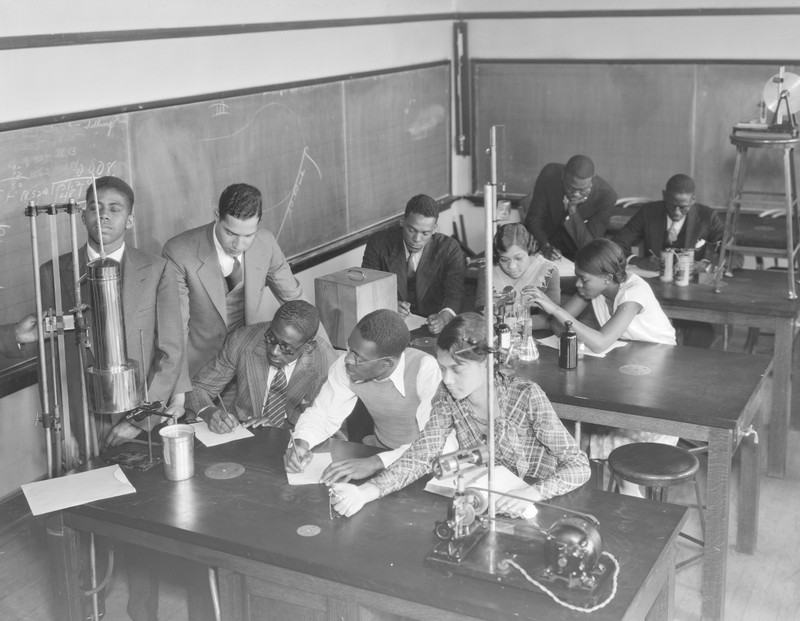
Faculty at Stowe Teachers College, 1940s
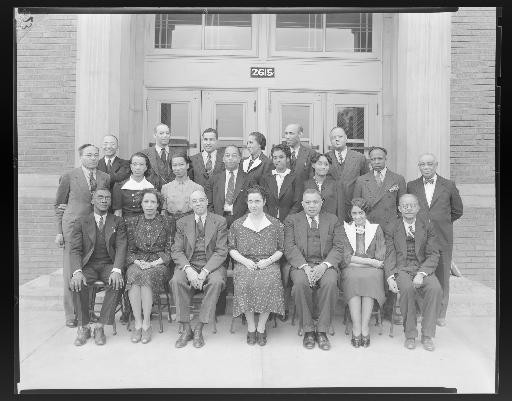
Class of 1925, Harris Teachers College

Harris Teachers College Classroom, 1940s
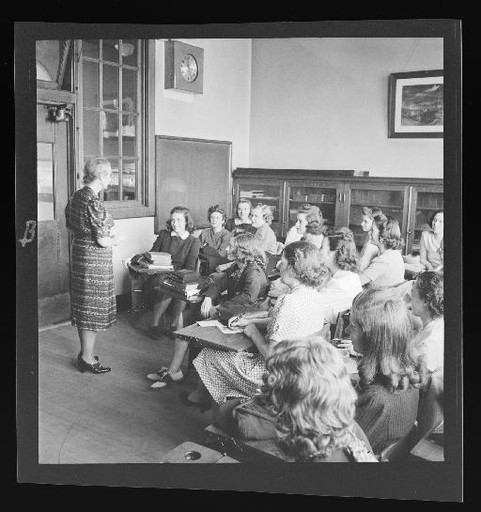
Henry Givens Administration Building
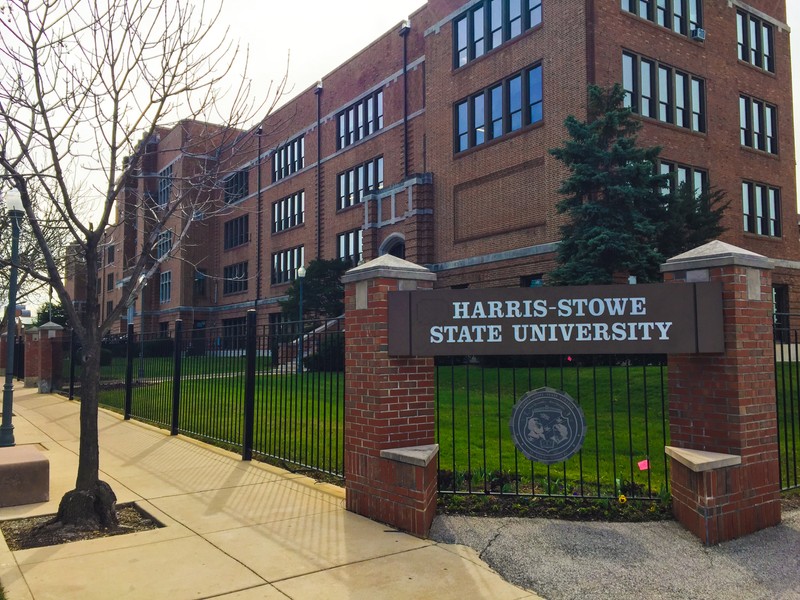
Main Gate to Campus
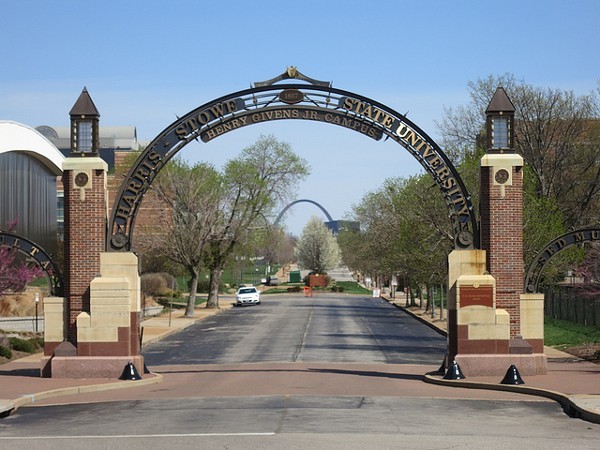
Backstory and Context
Text-to-speech Audio
The earliest predecessor of Harris-Stowe State University was a normal school for White students established in 1857 by the St. Louis Public School system. It was the first public teacher education institution west of the Mississippi River and the 12th of its kind in the United States. The school was later named Harris Teachers College in honor of William Torrey Harris, a Superintendent of Instruction in St. Louis and a United States Commissioner of Education. In 1920, Harris Teachers College became a four-year undergraduate institution where students could earn a Bachelor of Arts degree in Education.
The second predecessor institution was Stowe Teachers College established for African American students, first called the Sumner Normal School as an extension of Sumner High School in St. Louis' historic Ville neighborhood. It was founded by the St. Louis Public School system in 1890 and was upgraded to a four-year institution in 1924. Stowe Teachers College was the first college established for African American students in the St. Louis region, and the second of its kind in the state of Missouri: Lincoln University in Jefferson City was the first, chartered in 1866. In 1929, Sumner Normal School was renamed Stowe Teachers College after famous writer and abolitionist Harriet Beecher Stowe. In 1940, the Sumner Normal School relocated to 2615 Pendleton Avenue in The Ville.
On graduating from Sumner high, many students continued into Stowe where they trained to become teachers for local African American schools including Marshall, Turner Open Air, and Sumner. Students at Stowe describe the college as having a nurturing, family-like atmosphere where they were taught how to be effective teachers and good citizens. In a 2005 interview with historian Kenneth Allen Wetstein at the University of Missouri, St. Louis, former student Gloria Rosenblum described Stowe as an “Afro-American finishing school. Not only were we taught academics, we were, I would say, polished off as far as etiquette and proper behavior were concerned.”
In 1954, the St. Louis Public School system ended school segregation and integrated Stowe with Harris Teachers College. Former student Lynn Beckwith Jr. graduated from the newly-integrated Harris Teachers College in 1961. "When I was in high school there was Harris Teachers College for Whites and Stowe Teachers College for Blacks,” Lynn explains in a 2019 interview with KSDK news reporter Rhyan Henson. Growing up in St. Louis’ Ville neighborhood, Lynn was the first in his family to attend and graduate college. He explains that integration wasn’t easy, but relationships between White and African American students improved over time. “They were cordial and we were cordial because we wanted to make this thing work,” Beckwith states. “That experience at Harris Teacher's College laid the groundwork for me to learn how to work in an integrated world.”
Beckwith describes Harris-Stowe State University as “an anchor in the African American community.” The National Black Radio Hall of Fame is also housed on campus, and preserves important memorabilia from local and national entertainment icons. During the Civil Rights Era, radio broadcasts were important in spreading news and information to the African American community. The Harris-Stowe Hornets baseball team still plays on the same field that used to belong to the St. Louis Stars of the Negro Baseball League, who won championships there in 1928 and 1930.
In 1963, the integrated Harris Teachers College relocated to the original Vashon High School building at its current location in Midtown. In 1979, Senate Bill 703 made the newly-renamed Harris-Stowe College the newest member of the state’s public higher education system and it was renamed Harris-Stowe State College. In 1981, a new Bachelor of Science in Urban Education program was established, the only one of its kind at the undergraduate level in the United States. It was designed to prepare urban education specialists to effectively cope with the unique issues facing today's urban schools. In 1993, Harris-Stowe developed two new baccalaureate degree programs in Business Administration and Secondary Teacher Education. Finally, on August 25, 2005, Harris-Stowe State College obtained its current university status.
Sources
Cantey, Nia Imani, et al. 2011. “Historically Black Colleges and Universities: Sustaining
a Culture of Excellence in the Twenty-First Century.” Journal of African American Studies
17:142–153.
Harris-Stowe State University. 2020. “Campus History.” Accessed March 17, 2020.
http://go.hssu.edu/rsp_content.cfm?wid=50&pid=478.
Hensen, Rhyan. 2019. “Harris-Stowe Shapes St. Louis History through Academics.” ksdk.com,
Feb. 6, 2019. https://www.ksdk.com/article/news/local/Black-history/harris-stowe-shapes-st-
louis-history-through-academics/63-bd201eba-24e3-48e7-9e85-458e19a8bb0f.
4theVille. 2020. “Stowe Teachers College.” Accessed February 18, 2020. http://www.4theville.
org/about-the-ville.
Wetstein, Kenneth Allen. 2005. “Student Experiences During the 1954-1955 Merger of Harris
and Stowe Teachers Colleges.” PhD diss., University of Missouri, St. Louis. https://irl.umsl.
edu/dissertation/614.
Wright, John Aaron. 2002. Discovering African American St. Louis: A Guide to Historic Sites.
Second Edition. St. Louis: Missouri History Museum Press.
Missouri Historical Society
Missouri Historical Society
https://stlouis.genealogyvillage.com/HarrisCollege.htm
Missouri Historical Society
Wikimedia Commons
Paul Sableman, Riverfront Times
